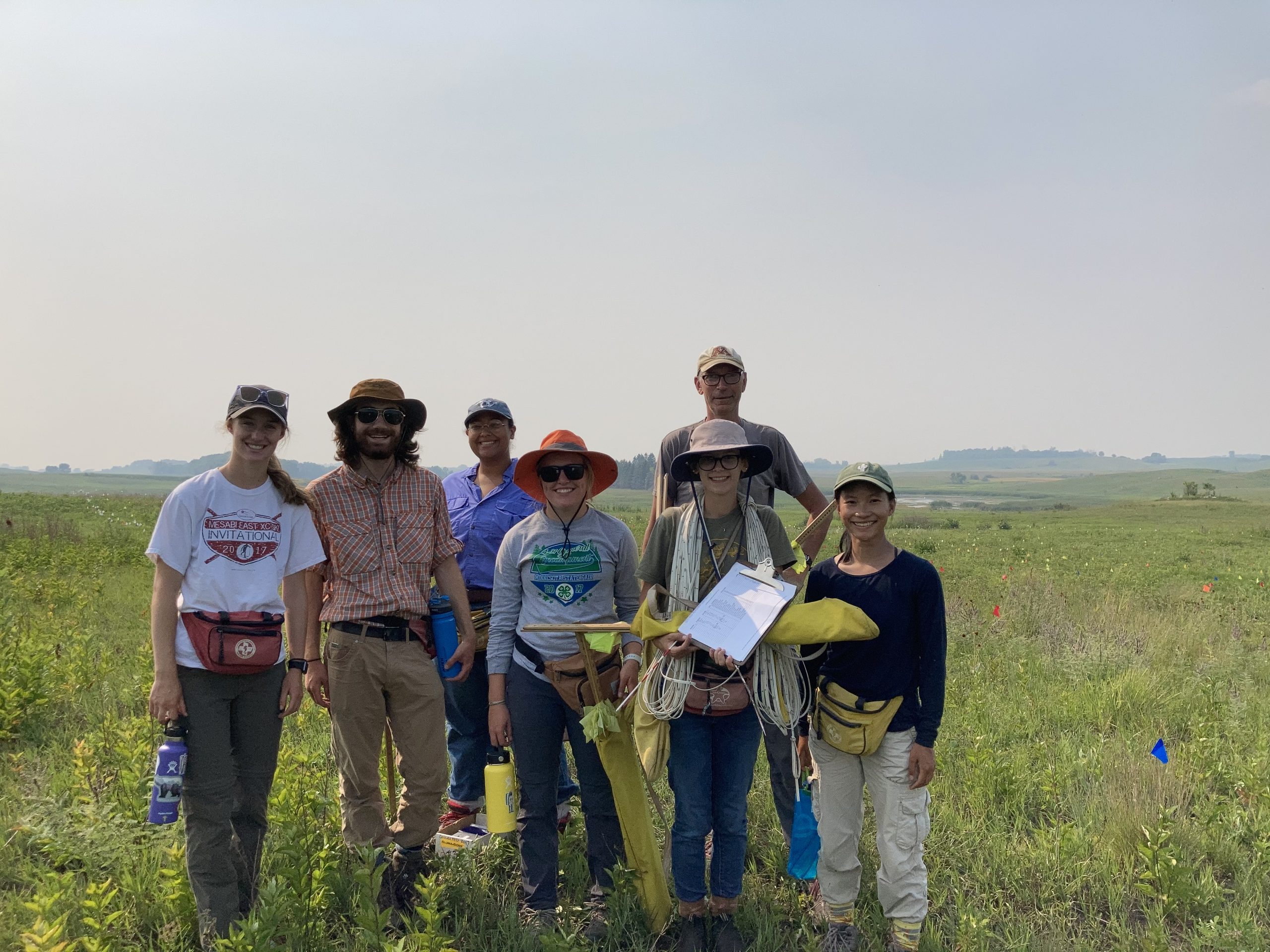To examine the role flowering phenology plays in the reproduction of Echinacea angustifolia, Jennifer Ison planted this plot in 2006 with 3,961 individuals selected for extreme (early or late) flowering timing, or phenology. Using the phenological data collected this summer, we explore how flowering phenology influences reproductive fitness and estimate the heritability of flowering time in E. angustifolia.
In summer 2021, we visited 2,010 positions of the 3,961 positions originally planted. We measured 1,591 living plants, of which 681 were flowering, with a total of 1,283 flowering heads. In the fall, we harvested ~615 heads from exPt02. We do not have an exact number of heads harvested from exPt02 yet because we have not had time to complete head inventory. The large difference between the number of heads and the number harvested has to do with high levels of seed predation, mainly by ground squirrels.
To learn more about flowering phenology in exPt02 in 2021, see the PSR on phenology in experimental plots.
Start year: 2006
Location: Experimental Plot 2, Hegg Lake WMA
Overlaps with: phenology in experimental plots, phenology in the remnants
Physical specimens: We harvested approximately 615 heads from exPt 2. Many heads were harvested by ground squirrels, so our number of heads does not match the number harvested. We brought the harvested heads back to the lab, where we will count fruits and assess seed set for each head.
Data collected: We collected data on each position planted. We recorded whether the plant was alive; if it was alive, whether it was flowering or basal. Basal plants had information about number of basal rosettes, number of basal leaves, and length of longest leaf. For flowering plants, we collected rosette counts and the height of each flowering head. When harvesting, we collected samples of loose achenes and recorded where they were from. Next spring, we will search for seedlings at these positions to ensure that there are not any rouge plants.
Products: Will and Jennifer are working on a manuscript using the flowering phenology data from this plot.
You can find more information about the heritability of flowering time and links to previous flog posts at the background page for the experiment.


Leave a Reply